
Why your business needs Secure SD-WAN?
Organizations across Australia have been using technologies such as DMVPN and MPLS to run their enterprise networks. So, what exactly are DMVPN and MPLS and why are they becoming unpopular nowadays?
Well, DMVPN is a routing protocol that can be used to build an overlay fabric between two enterprise sites without statically configuring devices. A DMVPN setup is a hub and spoke setup where the spokes can communicate with each other without going through the hub. In a DMVPN setup, the overlay is achieved using persistent tunnels (site to hub) and dynamic (site to site) tunnels. IPsec is used for encryption which makes DMVPN a popular choice for connecting enterprise sites using internet connections. It is a great alternative to dedicated MPLS connections, which can cost a lot of money. Here are a few advantages of DMVPN:
Advantages of DMVPN
· Enables secure on-demand direct communication path while reducing network configuration complexity when creating a full-meshed network.
· Uses cheap internet circuits to build connectivity, unlike MPLS which is expensive dedicated leased lines.
Disadvantages of DMVPN
· Cannot offer low-latency and high-performance network path for real-time business applications.
· Creating and managing a DMVPN configuration is not easy and requires certain skillsets.
Why is MPLS losing favor with businesses?
MPLS is a private dedicated connection used to link datacentres and branch offices. ISPs typically provide MPLS circuits and they guarantee network performance, quality, and availability, but all that comes at a COST. Backhauling cloud-destined traffic to branch for firewalling, over bandwidth-constrained circuits, result in added cost, poor user experience and affect business productivity.
Role of SD-WAN and why it is being fast adopted
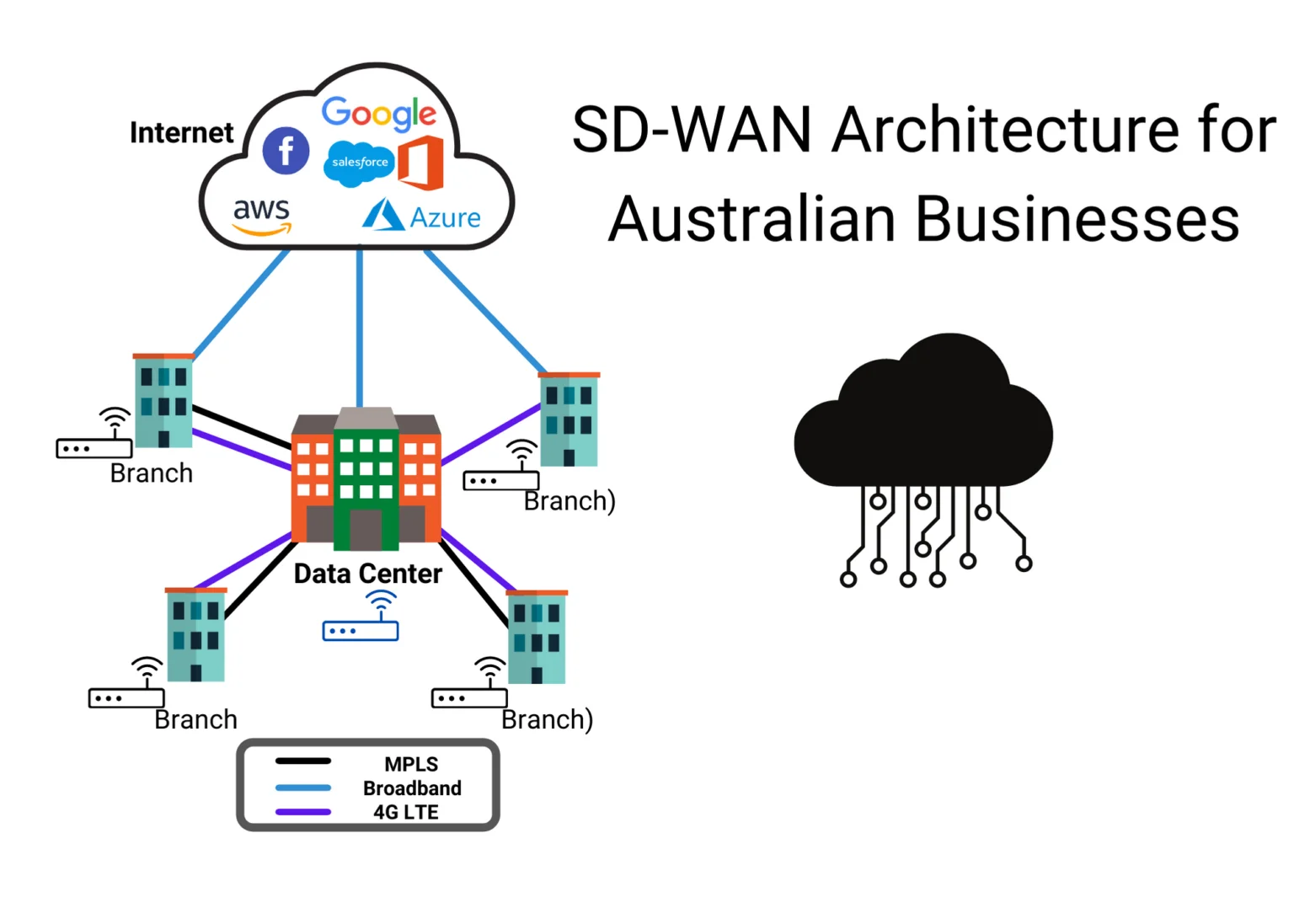
SD-WAN is a technology that has evolved over the years to mature into one that can overcome many of the disadvantages of technologies such as MPLS and DMVPN. SD-WAN offers more than just secure network connectivity. SD-WAN combines many network functions and benefits into a single solution while offering a great alternative to MPLS. All vendors out there are currently offering SD-WAN and each solution differs from the other in terms of how integrated they are in terms of meeting customer needs.
SD-WAN, at the end of the day, is focused on maximizing network performance. Companies across Australia, who run real-time applications have started looking at SD-WAN as a great alternative to expensive and complex solutions such as MPLS and DMVPN. For DMVPN to provide the same functionality, it required additional licenses and added network configuration complexity.
SD-WAN provides your business with all the benefits of DMVPN, plus a lot more in a single package. If you would like to consider choosing SD-WAN over DMVPN and MPLS, here are some compelling reasons:
1. You can use the internet as your new WAN and replace expensive MPLS circuits. So, lower OPEX and CAPEX.
2. SD-WAN can offer lower-latency and high-performance network paths for real-time applications such as VoIP.
3. Secure breakout for your SaaS applications from the branch, thereby eliminates backhauling and saves you money.
4. Implementing network changes or pushing security policies on SD-WAN is simple. A few clicks are all it takes!!
5. Scaling your network (adding a new site) is easy and can be done without hassle. (Thanks to Zero Touch Provisioning)
6. Traffic steering for business-critical applications can be done to provide better application performance. Eg, your Zoom traffic can always be given precedence over YouTube traffic, thereby enabling more productivity.
7. Visibility across the entire network lets you know how your network is performing. The ability to configure, manage and troubleshoot your network can be done from a single dashboard.
8. Provides business continuity using LTE or broadband, so that your business is up and running 24/7. Do not worry about unstable NBN connections, as your business can seamlessly failover to an LTE connection when your NBN goes down.
9. SD-WAN delivers better performance by prioritizing latency-sensitive traffic using traffic-shaping, application recognition, load-balancing, and prioritization. This can be done as per business requirements.
10. A fully integrated Secure SD-WAN solution, when integrated into the SASE framework, can support secure remote work in today’s times. This is what most organizations are desperately looking for.
The right SD-WAN solution can enable business transformation for your organization. The rate of adoption of SD-WAN has gone up in the last few months, due to the pandemic, cloud adoption, and added complexity from legacy infrastructure. So, if you would like to achieve greater business productivity and better application performance, without denting the bottom line, then SD-WAN is the right solution for your business.
To find out more, reach out to us at info@sprintnetworks.com or visit our website- https://www.sprintnetworks.com.au/learn-about-sd-wan/
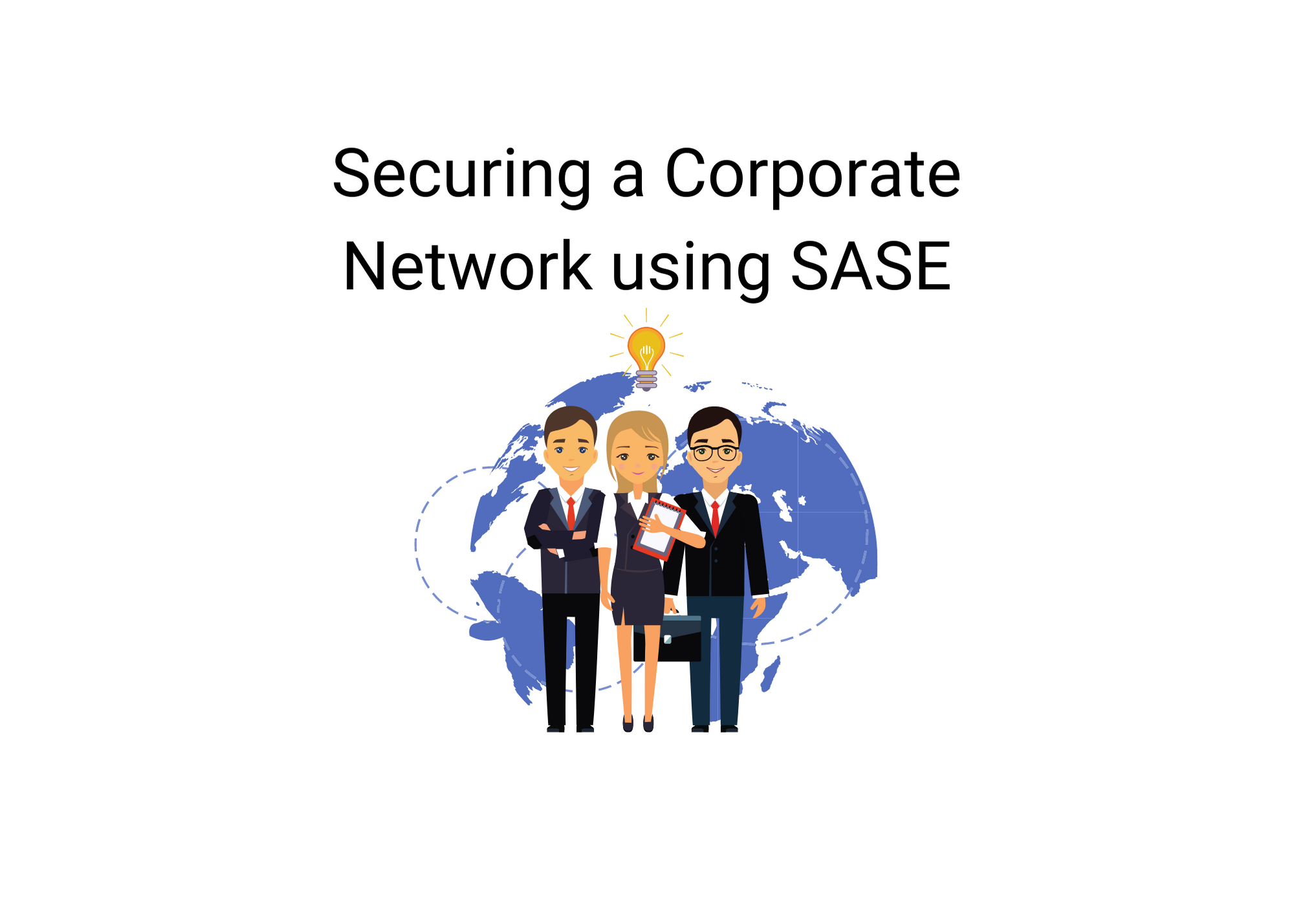
How large corporations can secure their remote workforce using SASE?
By Steve Percy Network Security, Cloud Computing, SASE No CommentsHow large corporations can secure their remote workforce using SASE?
Comprehensive WFH solution for the global enterprise
The pandemic has made the enterprise perimeter more dynamic and thereby changed the nature of the modern workforce. More and more corporations are moving towards adopting the latest approach to securing their remote workforce. In a distributed workforce, each endpoint can become a possible gateway for hackers and cybercriminals to penetrate and sabotage the corporate network, which would result in millions of dollars worth of damages for the organization.
To secure the corporate resources, it becomes absolutely crucial to secure each and every endpoint with the best security available. This is why many large corporations are already moving towards or have already adopted SASE (Secure access service edge). SASE is the convergence of networking and security capabilities into one integrated solution and this is exactly what enterprises need in today’s world. To learn more about SASE and it’s capabilities, click on the link below.
The SASE model for the global enterprise
A Large corporation, whose workforce is distributed, irrespective of industry, would be looking at the SASE model with a lot of hope right now. Let us take a large corporation as an example and analyze what challenges they could be facing right now, for them to consider moving towards a SASE model.
Some of the challenges could be:
1. Provide WFH users with secure access to applications and also provide them with required flexibility to perform their duties.
2. Provide secure access to certain corporate resources to any users outside of the organization.
3. Bring in a model, where every user is not given access to all corporate resources and only those that they would require to perform their day-to-day duties.
4. Requirement of some sort of authentication to happen on the client device, every time the client tries to access a corporate resource.
5. Provide a high-level of security overall, by integrating more and more security capabilities to form a robust security solution.
A SASE model is what an organisation would need to tackle the above mentioned questions or requirements. The SASE model is perfect for the above mentioned scenario and can truly help organisations secure their workforce in todays’ day and age. Adopting SASE without a proper framework or strategy is also not the right way of going about it. As long as the organisational goals match with the SASE model, the solution should be able to solve most of the problems plaguing the modern workforce.
How large businesses can benefit from a SASE solution?
- Using SASE, the business can provide secure identity-based, encrypted access to remote users.
- Reducing cost through simplying IT network.
- More control and visibility of branch sites with deep level analytics.
- Enhanced security using a NGFW and encrypted private access.
- Strategically, provide the enterprise with more incentive or opportunity to transition to a lean structure.
Many organisations have already started reaping the benefits of SASE and many others are slated to follow suit. Eventually, the management needs to be convinced of the obvious benefits of a SASE model and how it can help organizations sustain themselves in the new normal. This has become easier due to prevailing circumstances and it can only take off, hereafter.
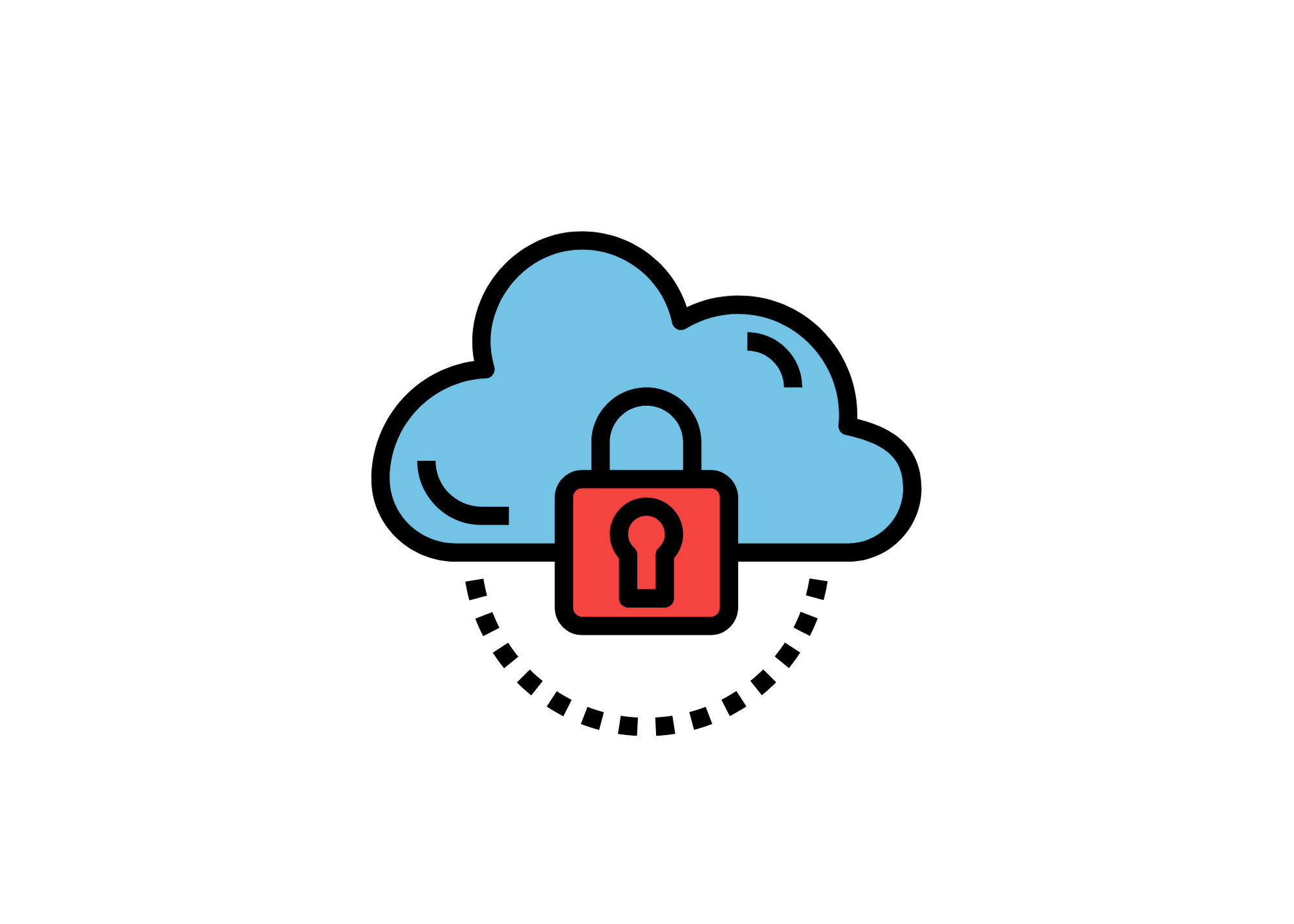
How does SD-WAN fit into the SASE model?
By Steve Percy Superfast IT Networks, SASE, SD-WAN No CommentsHow does SD-WAN fit into the SASE model?
SASE or secure access service edge is the new buzzword in the networking industry nowadays. It has taken the networking world by storm and everyone from vendors, ISPs and customers have jumped on the bandwagon. Every vendor has taken the SASE framework and each one has come up with their own SASE solution by either modifying pre-existing solutions or by stitching together separate solutions to form one integrated solution.

The traditional router centric WAN architecture was becoming unsuitable to support the needs of the modern workforce. The old WAN model could not cope with the sudden explosion of cloud-destined WAN traffic, which then gave rise to SD-WAN or software-defined wide area networking. This did solve many of the problems plaguing traditional WAN networks, but was not built to support what came our way last year- the pandemic.
The pandemic has changed the nature of the modern workforce and made the network perimeter more dynamic. For the last one year, people have been working from everywhere, which means that your network has expanded like never before. This requires securely connecting your users in and out of corporate resources in the most secure and scalable way possible.

Despite having similar goals, SASE and SD-WAN do not have many architectural similarities. Some higher-level similarities include how they are both wide-area networks and their virtualized infrastructure. SASE and SD-WAN both cover a large geographical area. What is different is the infrastructure. SASE’s infrastructure has private data centers and third party facilities acting as cloud endpoints. These are where networking, optimizations and security functions are run.
In an SD-WAN box, these functions run in boxes at a branch or an HQ. Both SD-WAN and SASE can be controlled from anywhere through a cloud hosted portal.
Both SD-WAN and SASE are designed to cover a large geographic area. What is different is in the infrastructure. SASE’s infrastructure has private data centers, colocation facilities, or a cloud acting as endpoints. These are where the networking, optimization, and security functions run. In an SD-WAN these functions run in boxes at a branch and headquarters. Both SASE and SD-WAN can be controlled from anywhere. In SD-WAN’s case, a DIY approach will usually put control in the organization’s headquarters, a managed solution will be controlled remotely by the service provider, and a co-managed solution is similar to a managed solution but with an organization having some control through a portal. SASE is still in its infancy and is slowly emerging. Many SD-WAN vendors are beginning to offer a SASE solution in addition to their SD-WAN solution, or at least claiming that they have SASE. A true SASE solution is still a couple of months away, but that is not going to stop enterprises from adopting this technology.

The future of security architecture is in the cloud and SASE is at its forefront.
By Steve Percy Superfast IT Networks, Cloud Computing, SASE, SD-WAN No CommentsThe answer to protecting a dynamic and every evolving enterprise perimeter is in the cloud.
The last 12 months have seen the pandemic change the way businesses operate around the world. The old model of the traditional enterprise, applications and data center has given way applications moving to IaaS and SaaS platforms.
More organizations are using cloud-hosted tools such as Salesforce, ServiceNow and Office 365 to run their business. Gartner had predicted that by 2022 more than half of enterprise data will be created and processed outside the data center. This needs to be adequately protected and that is where the concern lies.
What happens when your data is distributed everywhere?
Well, it means that the enterprise perimeter is now dynamic and it poses a real challenge when the users and data are distributed, which means greater visibility and control is required across boundaries.

SASE is more than just security in the cloud.
It combines networking elements, security elements and elements of identity and access. The key to implementing SASE successfully lies in the ability of the solution to provide clear visibility and control of policies which are tightly integrated across the boundaries. Identity forms a core part of the SASE architecture and is tightly coupled with security. What SASE aims to achieve is bring in identity as a core part of the model, where the user is given access to an application based on their privilege and how they authenticate themselves. This is possible due to the Zero Trust approach that lies in the cloud and underlying infrastructure. This means that the user session is protected whether a user is on your network or using public cloud. This increases your visibility, which allows you to better see emerging threats across the network.This is the latest evolution in security and Gartner summarized it as “a new package of technologies including SD-WAN, SWG, CASB, ZTNA and FWaaS as core abilities , with the ability to decrypt content at line speed, with continuous monitoring of sessions for risk and trust levels. Gartner also expects significant take up in the next few years to the extent that “by 2024, at least 40% of enterprises will have explicit strategies to adopt SASE“.

What criteria would you follow when choosing a SASE solution?
By Steve Percy Superfast IT Networks, Cloud Computing, SASE, SD-WAN No CommentsWhat criteria would you follow when choosing a SASE solution?
The SASE market is beginning to take shape as multiple vendors have already started adding networking and security capabilities to their existing solutions to create a “SASE” solution, which they believe is set to give them an upper hand in the crowded networking solutions market.
Many of the vendors are stitching together multiple solution to create a SASE model as they are not yet capable of delivering the full benefits of SASE. This approach will result in the solution having poor integration capabilities in the long run.
This is why it is very important to have a pragmatic approach towards identifying which vendor solution can truly meets the requirements of the modern digital business.
Understanding the SASE model
Before you start comparing SASE providers, it is very important to have a clear understanding of what SASE is. If you ask me to explain SASE in one line, I would say that,
“SASE is the convergence of networking and security functions into a cloud-delivered platform.”
I have had multiple discussions with experts in the field and also with my own colleagues at work. Everyone has a different understanding of what SASE is, but where we all converge is what SASE tries to achieve.
For me SASE is all about, “Leveraging the capabilities/functionalities of existing networking and security solutions to securely connect ‘n’ number of remote users (irrespective of where they are) to their applications, all sitting in the cloud.”
Or like how one of my colleagues who has more than 20 years of experience in the networking industry and a keen observer of SASE would put it, “SASE is being able to securely connect to an application, from anywhere”.
Gartner describes SASE as an identity- centric architecture that converges and inverts traditional datacenter-focused architectures. In other words, SASE combines network and security functionality in a model where user and resource identities, not physical data centers, are what determine access decisions.
How to evaluate SASE vendors?
What does SASE promise to offer?
The promise is that it will deliver converged network and security service on a global scale and reduce cost and complexity while improving visibility, agility and application performance. However, to make sure that your enterprise benefits from the full potential of SASE, it is crucial to ask the right questions and understand the key criteria by which to evaluate SASE providers.
1.Are networking and security services integrated?
SASE combines networking and security functions into a single cloud-native platform. If a SASE provider is unable to provide a platform that converges both networking (SD-WAN, WAN acceleration) and security services (NGFWaaS, IPS, ZTNA and SWG), they are not a true SASE solution.
2. Is the platform cloud-native?
To deliver the full benefits of the model, a cloud-native approach is required. SASE is all about identity and this approach should extend to all network edges, including on-premises, mobile and in the cloud. A converged cloud-native software stack can certainly meet this requirement.
3. Will you have optimal network performance on a global scale?
A global network backbone is not a requirement for SASE, but getting optimum experience anywhere is the world is a must for the end user. This is why the number of PoPs (points of presence) that each vendor possesses matters. If a user is connecting from the Philippines, but not through a PoP in the Philippines, but through one in Singapore, then it is not ideal as it is not the most efficient route to reach the desired application.
4.Does the SASE provider enable ZTNA (Zero Trust Network Access)?
ZTNA is an integral part of SASE. It provides the granular identity driven aand contextually aware approach to network security that the legacy “castle and moat” approach could not. This legacy approach is difficult to extend to cloud and mobile endpoints. With ZTNA, enterprises can configure application-specific access based on user identities for cloud, mobile, and on-premises users and resources.
5. Does the SASE provider reduce network complexity and cost?
AT the end of the day, what would an enterprise want out of a SASE solution?
Yes, it finally comes down to just a few simple things. Features such as ZTNA, NGFWaaS, SD-WAN and WAN acceleration will help ensure SASE vendors improve network performance and security posture, but that is only half the story. SASE should be able to drive down cost and complexity. So, how can you reduce cost? Well, cost savings stem from a reduction in Capex and Opex due to less appliances to source, provision, monitor, patch and replace, thanks to a cloud-native multitenant architecture. Complexity also goes down for many of the same reasons.
So, organizations should be looking at the most integrated solution, one that is cloud-native, along with open integration capabilities. This would mean reduction in costs, less complexity and more secure access for all endpoints.
To find out more about SASE, write to us at- info@sprintnetworks.com
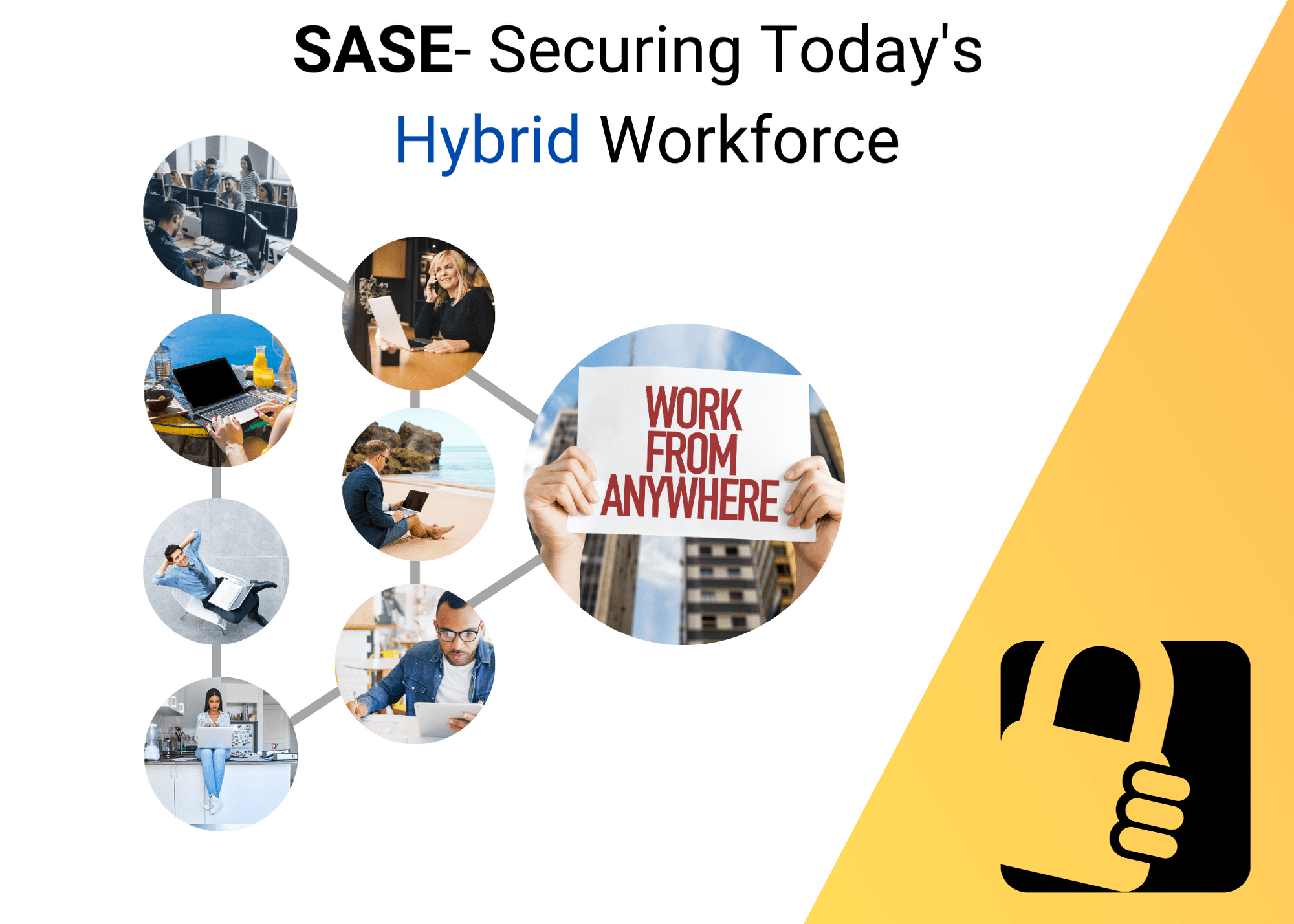
How SASE can secure a hybrid/distributed workforce?
By Steve Percy SASE, Cloud Computing, Network Security No CommentsHow SASE can secure a hybrid/distributed workforce?
Security in the cloud is the way forward
One of the biggest challenges for IT teams in today’s world is ensuring that security is applied consistently across a globally distributed workforce. The main drivers of this change can be attributed to edge computing, the cloud and Covid-19. These drivers have caused the modern workforce to become highly distributed/de-centralized and perimeter less.
So, what is meant by ‘distributed’?
Users are working from anywhere and are connecting to resources that are also highly distributed, such as multiple clouds, containers and SaaS applications as well as traditional DCs. Both users and applications are scattered in multiple clouds as well as the data center, and this makes no sense to have a centralized form of security in place.
What does this do to the “Hub and Spoke” topology?
This makes the H-S topology OBSOLETE. Before, users used to connect to the DC over a VPN, but now that does not work because the DC does not look like it used to. This requires securing the WAN through a cloud-native approach, replacing the need to run security at the old centralized datacenter.
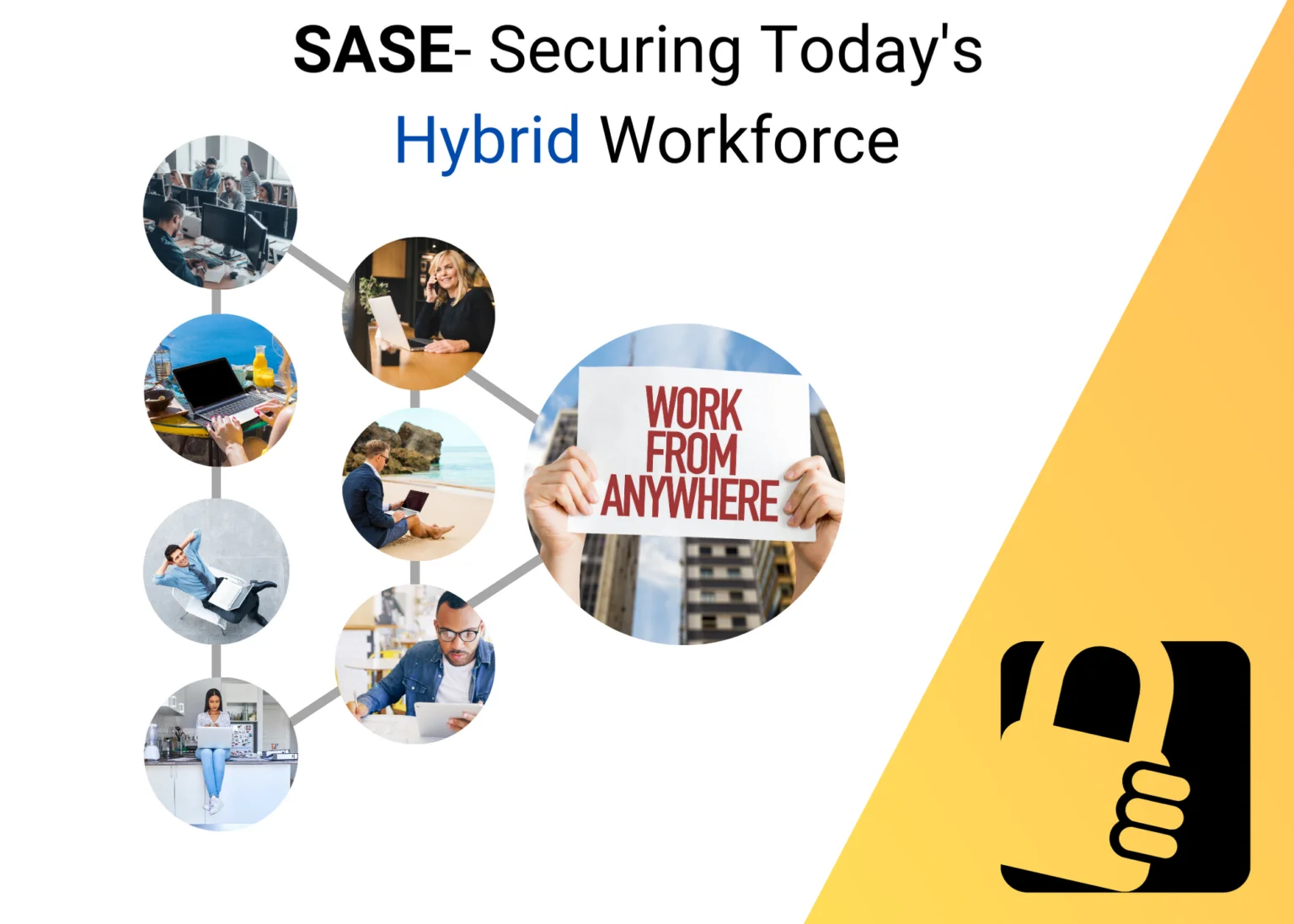
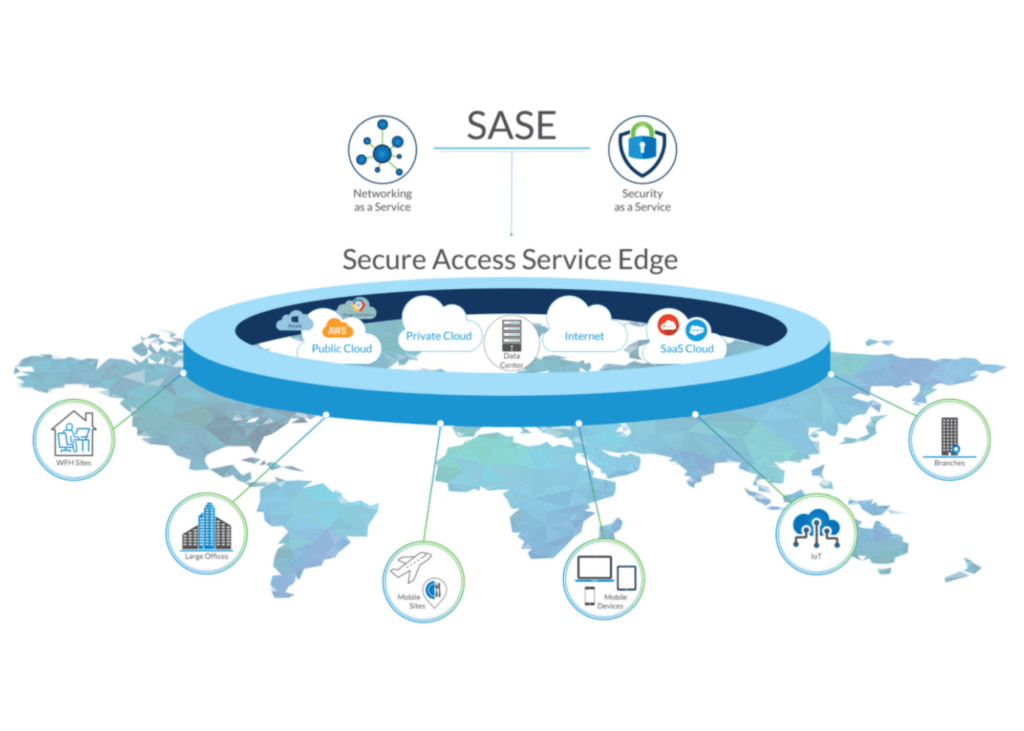
This creates multiple challenges for IT teams trying to secure all the endpoints.Tackling this challenge begins with ensuring security consistent policy is enforceable across the entire network. This requires a full package of solutions that work together in tandem to detect and manage threats. An NGFW will not be able to handle threats at such a level. The solution relies on creating a universal security platform that includes a broader array of security tools than ever before, including web application firewalls and a secure SD-WAN solution that converges security with essential networking functions like cloud-on-ramp, application acceleration and traffic prioritization.
Even when a security platform that provides all the solutions is available, it only extends to the LAN, datacenter, WAN and cloud edges. But, over the last one year, Covid-19 has pushed organizations to adopt an aggressive WFH policy. So, while this secure the traditional environments, securing remote workers becomes an absolutely crucial requirement.
SASE allows an organization to extend the same security functionality at not just the LAN or datacenter edge, but also at the branch edge and public cloud edges to secure the hundreds and thousands of workers. This is what SASE is all about. It treats each and every user/endpoint as a branch and the only way a user can get access to a service or application is by authenticating oneself through encrypted keys.
A cloud-based SASE solution, built around an enterprise-grade security platform- is a great solution for managing a remote/hybrid workforce. This eliminates the need for a user to create a VPN tunnel back into the corporate network, and then backhaul all of that traffic out to the cloud-based application and other services and back. With SASE, remote workers will be directed through secure connection to the applications and services they need through a highly secure SASE cloud.
This ensure that a proper security framework is in place to support the next level of digital transformation. Being able to connect from anywhere, while being secured 24/7, is the way to go to create a safer and more secure digital world.




